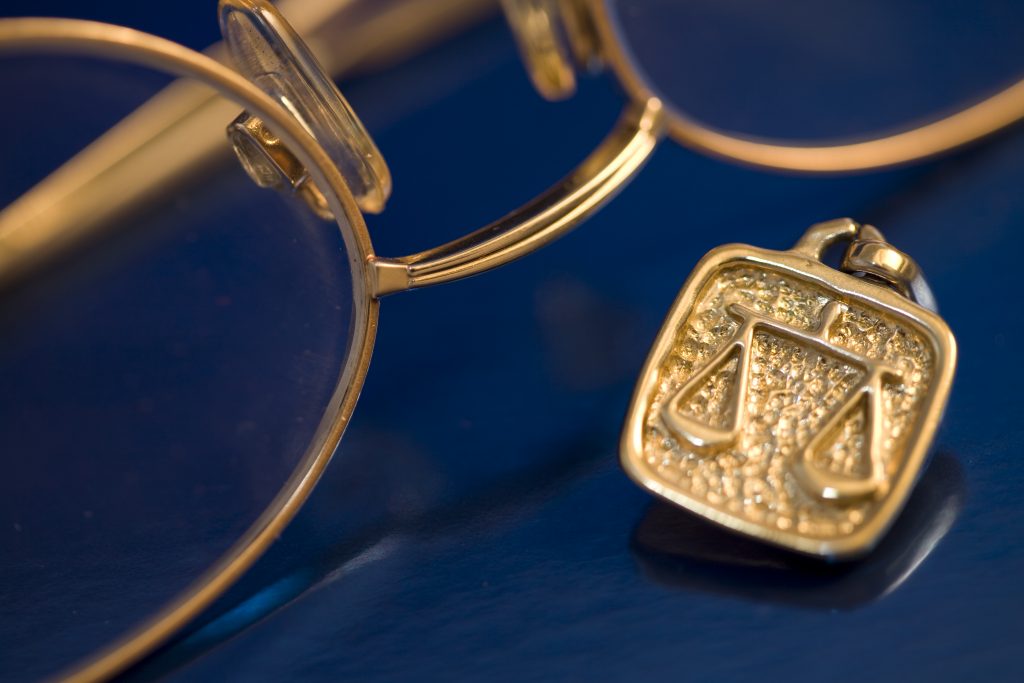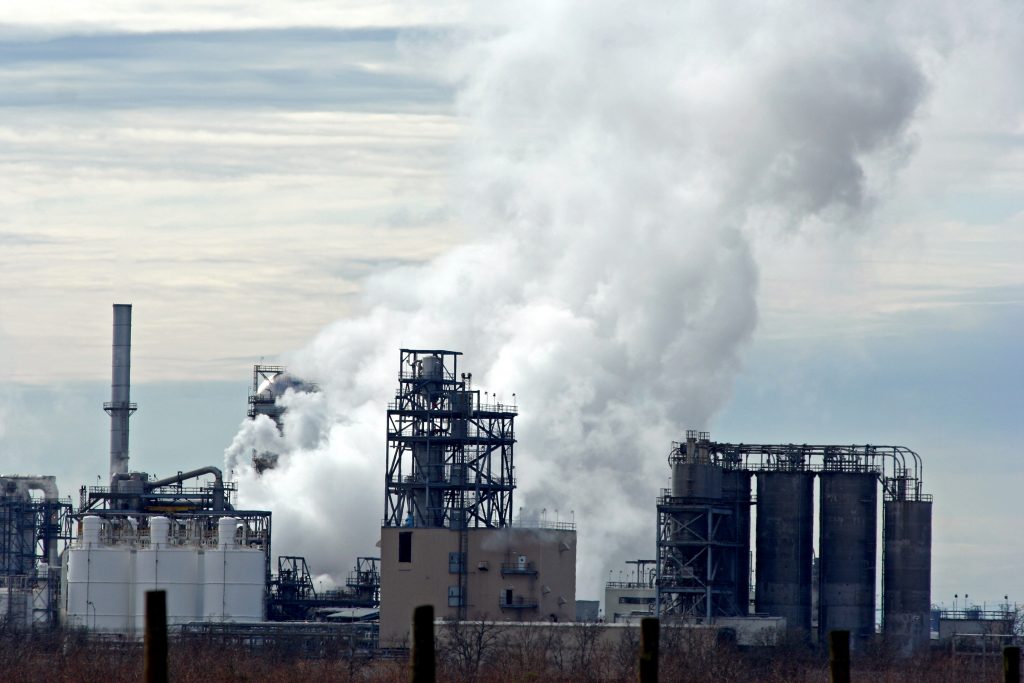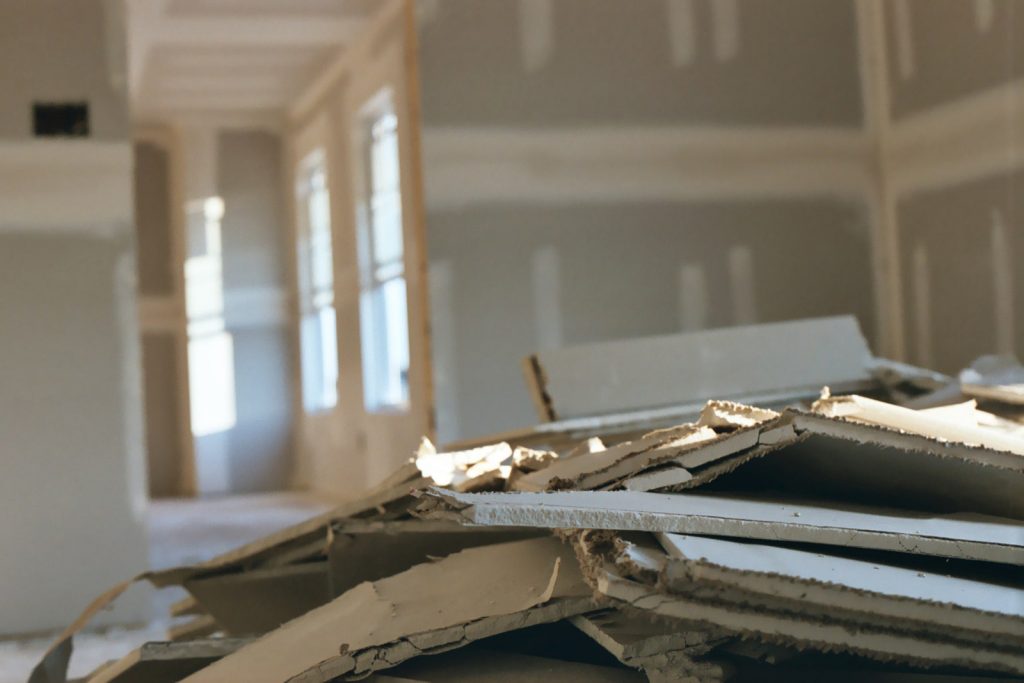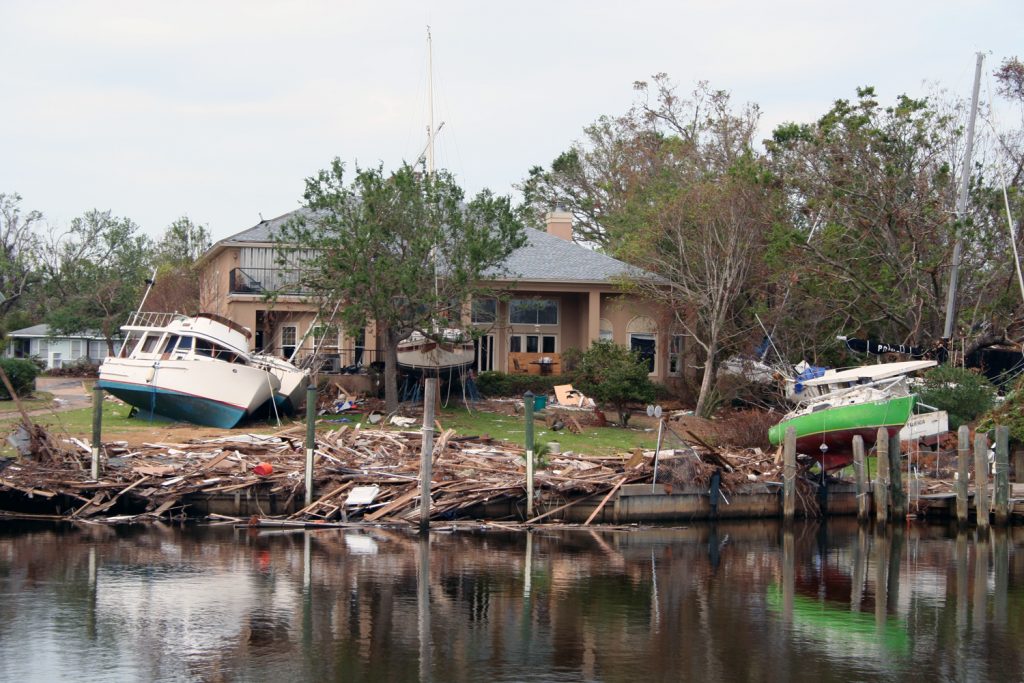Articles Posted in Class Action
CLASS ACTION NOTICE FOR THE DOW CHEMICAL JULY 2009 ETHYL ACRYLATE LEAK CLASS ACTION
 SHEILA GUIDRY, ET AL., individually and on behalf of all others similarly situated VERSUS DOW CHEMICAL COMPANY, ET AL., Eastern District Court of Louisiana, CIVIL ACTION NO. 19-12233 Class Members Please Take Notice of the Following Important Announcement:
SHEILA GUIDRY, ET AL., individually and on behalf of all others similarly situated VERSUS DOW CHEMICAL COMPANY, ET AL., Eastern District Court of Louisiana, CIVIL ACTION NO. 19-12233 Class Members Please Take Notice of the Following Important Announcement:
CLASS ACTION NOTICE
SHEILA GUIDRY, ET AL., individually and on behalf of all others similarly situated VERSUS DOW CHEMICAL COMPANY, ET AL., Eastern District Court of Louisiana, CIVIL ACTION NO. 19-12233, SECTION: F; JUDGE: MARTIN L.C. FELDMAN, MAG: #4, KAREN WELLS ROBY
Class Settlement Agreements And Amendments Affect All Parties
 When a healthcare provider is dealing with workers’ compensation cases, the outcome can be a bureaucratic nightmare. When insurance companies also get involved, legal disputes are bound to arise. Courts have to navigate these cases, even when they seemingly end in a mutual settlement agreement by all parties.
When a healthcare provider is dealing with workers’ compensation cases, the outcome can be a bureaucratic nightmare. When insurance companies also get involved, legal disputes are bound to arise. Courts have to navigate these cases, even when they seemingly end in a mutual settlement agreement by all parties.
In this instance, a case was brought by an orthopedic surgery office (“Plaintiff”) against Bestcomp, Inc. (“Bestcomp”). The Plaintiff filed workers’ compensation medical bills and claimed that Bestcomp had improperly discounted these without providing notice. Other plaintiffs joined in on the lawsuit, and the lawsuit expanded to cover multiple defendant entities and insurance companies, as well. The Plaintiffs entered a Class Settlement Agreement and General Release with most of the defendants. The current appellees (“Appellees”) are two of those defendants, Stratacare, Inc. (“Stratacare”) and Rehab Review, Inc. (“Rehab”), and the appellants are the insurance companies connected with them (“Appellants”).
All parties agree that releasing roughly 45,000 claims in a settlement agreement was a mistake, so a motion to amend the agreement to remedy the error was filed. The Appellants, however, believe that Rehab was released in the next section of the document. They opposed the motion and filed exceptions such as res judicata (meaning an issue that has already been judged upon), lack of subject-matter jurisdiction, and no right of action. The trial court denied these exceptions and allowed the agreement to be amended. The court reasoned that the settling parties did not intend to release Rehab, and this clause was “an undisputed mistake” inconsistent with the rest of the record and thus likely a clerical error.
Berniard Law and Martzell, Bickford & Centola making progress in 3M EarPlug Hearing Loss and Tinnitus Lawsuits
 The Berniard Law Firm and Martzell, Bickford and Centola Law Firm have made strides in a multidistrict litigation lawsuit against 3M Company concerning the 3M dual-ended Combat Arms™ earplugs supplied to the United States military personnel from 2003-2015. After a whistleblower lawsuit alleging a defect in the earplugs, 3M agreed to pay over 9 million dollars to end litigation surrounding the case. However, 3M did not admit to any defect in the product. Considering the vastness of this case spanning to courts in Indiana, Georgia, Tennessee, Florida, and Louisiana and many others, the case has been centralized to be litigated in the United States District Court of Florida Pensacola Division as of April 9, 2019.
The Berniard Law Firm and Martzell, Bickford and Centola Law Firm have made strides in a multidistrict litigation lawsuit against 3M Company concerning the 3M dual-ended Combat Arms™ earplugs supplied to the United States military personnel from 2003-2015. After a whistleblower lawsuit alleging a defect in the earplugs, 3M agreed to pay over 9 million dollars to end litigation surrounding the case. However, 3M did not admit to any defect in the product. Considering the vastness of this case spanning to courts in Indiana, Georgia, Tennessee, Florida, and Louisiana and many others, the case has been centralized to be litigated in the United States District Court of Florida Pensacola Division as of April 9, 2019.
The Berniard Law Firm and the Martzell, Bickford and Centola Law Firm are already involved in the multidistrict litigation process representing hundreds of veterans and their interests, and the firms expect to file hundreds of these lawsuits in the coming months. Moreover, Jeffery P. Berniard is seeking a leadership position in this multidistrict litigation case and will be appointed as a member of a committee to work on behalf of all of the Plaintiffs who file cases into the consolidated litigation. The leadership position would entail being part of a team that is responsible for coordinating discovery and other pre-trial work in this MDL. As of April 19, 2019, the Court began the process of appointing the plaintiff leadership structure. Considering Mr. Berniard’s participation in past mass litigation cases and the high volume of clients signed onto this case it is expected that Berniard Law Firm and Martzell, Bickford and Centola Law Firm will be active in this litigation.
A recent Order by the Court task with dealing with the Pretrial concerns of these consolidated cases allows for “Direct Filing” into the MDL. Usually, the procedural rules of Federal Court do not allow Plaintiffs to file lawsuits in Districts where they have no jurisdiction or venue. However, in order to promote efficiency the transferee district, Judge M. Casey Rodgers, is allowing Plaintiffs to direct file their 3M Tinnitus and hearing loss lawsuits into her district. This was a great decision by the Court and The Berniard Law Firm and the Martzell, Bickford and Centola Law Firm will file hundreds of lawsuits on behalf of their clients into this district in the coming months. The “Direct Filing” Order does point out that filing into the transferee district has no effect on the Defendant’s ability to allege a statute of limitations defense. This means that if your case is filed late you could lose all rights that you have to go after 3M or any party who could be held responsible for your hearing loss or tinnitus. You should act immediately in order to ensure you protect your rights.
If you are a veteran and currently suffering from hearing loss or tinnitus, we want to help!
 A report from the U.S. Department of Veterans Affairs (VA) medical centers shows that Tinnitus and hearing loss are the number one and two health conditions among military veterans. In 2017, almost two million Veterans were receiving disability compensation for tinnitus and over a million were receiving compensation for hearing loss. Recently a whistleblower lawsuit was settled that could shed some light on why so many of our Veterans are having hearing related issues even though they were supplied earplugs. While 3M did not admit any guilt in settling the lawsuit, many new lawsuits are being filed on behalf of the individual Veterans who have hearing loss or Tinnitus in order to seek compensation for 3M allegedly knowingly supplying faulty earplugs to the United States Government for use by members of the Armed Services.
A report from the U.S. Department of Veterans Affairs (VA) medical centers shows that Tinnitus and hearing loss are the number one and two health conditions among military veterans. In 2017, almost two million Veterans were receiving disability compensation for tinnitus and over a million were receiving compensation for hearing loss. Recently a whistleblower lawsuit was settled that could shed some light on why so many of our Veterans are having hearing related issues even though they were supplied earplugs. While 3M did not admit any guilt in settling the lawsuit, many new lawsuits are being filed on behalf of the individual Veterans who have hearing loss or Tinnitus in order to seek compensation for 3M allegedly knowingly supplying faulty earplugs to the United States Government for use by members of the Armed Services.
The Berniard Law Firm and Martzell, Bickford and Centola Law Firm have already taken steps to protect veterans that are suffering from hearing loss and/or tinnitus at the hands of the 3M Company. As a whistleblower lawsuit alleges in 2016, 3M dual-ended Combat Arms™ earplugs supplied to soldiers from 2003-2015 contained a dangerous design defect. The lawsuit alleges that when the earplug was used as it was intended to be used, the plug can become loose in the ear — thus leading to a failure in providing vital hearing protection. Moreover, this lawsuit alleges that 3M employees were aware of these dangerous defects as early as 2000, three years before 3M became the sole provider of earplugs to the United States military.
The lawsuits that have been filed by numerous law firms alleging that 3M knowingly sold faulty earplugs to the U.S. Department of Defense have all been consolidated in one centralized court by the Judicial Panel on Multidistrict Litigation. The Northern District of Florida has been selected as the transferee district, with Judge M. Casey Rodgers presiding over the centralized cases. This means that any case filed by an individual that alleges 3M caused them harm due to use of the dual-ended Combat Arms™ earplugs will be transferred to Judge Rodgers court where she will rule on issues related to the cases. The Judicial Panel on Multidistrict Litigation decided to consolidate all of the cases in Judge Rodger’s Court in order to eliminate duplicate discovery, to eliminate inconsistent pretrial rulings as well as to generally conserve the resources of all the parties involved include the judiciary. The Berniard Law Firm and Martzell, Bickford and Centola Law Firm are actively participating in these coordinated proceedings in Judge Rodger’s court and will continue to work on behalf of all the Plaintiffs with cases filed into the transferee district.
Louisiana Court of Appeal Upholds High Legal Fee Awarded to Attorney in Class Action
 Attorneys are known for being way too expensive to the general public. Most people think that attorney’s charge an obscene amount for every little task that they do pertaining to a case, such as talking on the phone with their client or sending an email. However, unknown to most people attorneys are not allowed to charge fees that are excessive. The courts have a system in place to assure that clients are not being taking advantage of when it comes to paying legal fees.
Attorneys are known for being way too expensive to the general public. Most people think that attorney’s charge an obscene amount for every little task that they do pertaining to a case, such as talking on the phone with their client or sending an email. However, unknown to most people attorneys are not allowed to charge fees that are excessive. The courts have a system in place to assure that clients are not being taking advantage of when it comes to paying legal fees.
Recently, in the City of New Orleans the Louisiana Fourth Circuit Courts of Appeals affirmed a decision by the trial judge on a reasonable legal fee, to be paid to attorney Carolyn Gill-Jefferson. Ms. Gill-Jefferson was paid the legal fee For her expedited services rendered on behalf of the class counsel in connection with the court authorization of hundreds of minors’ settlements necessary to the disbursement of settlement funds. See Billieson v. City of New Orleans, unpub., 14-752 (La. App. 4 Cir. 2015).
This case central issue is whether the award of $457,500 to Ms. Gill-Jefferson was excessive. There are several requirements that must be satisfied in determining a fee is reasonableness as stated in Rule 1.5(a), Rules of Professional Conduct (emphasis added); See State, Dept. of Transp. and Development v. Williamson, 597 So. 2d 439, 442 (La. 1992).
Requirements for Claims under the Oil Pollution Act
 Waiting until the last minute to do almost anything is not recommended but it is especially true if you are seeking to bring a claim for damages. That is what some fishermen found out when they sought to bring claims under the Oil Pollution Act of 1990 (OPA) for damages that resulted from an oil spill. The oil spill came from a barge owned by American Commercial Airlines, LLC (ACL) that had been involved in a collision on the Mississippi River in the Port of New Orleans on July 23, 2008.
Waiting until the last minute to do almost anything is not recommended but it is especially true if you are seeking to bring a claim for damages. That is what some fishermen found out when they sought to bring claims under the Oil Pollution Act of 1990 (OPA) for damages that resulted from an oil spill. The oil spill came from a barge owned by American Commercial Airlines, LLC (ACL) that had been involved in a collision on the Mississippi River in the Port of New Orleans on July 23, 2008.
On July 25, 2011, the fishermen claimants filed an action against ACL in the United States District Court for the Eastern District of Louisiana. The district court denied ACL’s motion for summary judgment but certified to the United States Court of Appeals for the Fifth Circuit two issues of law regarding the requirements for proceeding under OPA. One issue was whether the claimants met the requirements when they did not personally sign the claim forms and did not provide specific requested items in support of their claims. The other issue was whether the claimants had to make a proper presentment at least 90 days before the three year limitation period ran out. The first issue pertained to all claimants but the second issue involved only those claimants who first presented their claims on or after July 22, 2011, because those claimants had not waited the 90 days after first presenting their claims to file an action in order to not be barred by the three year limitation period.
Individuals and entities harmed by an oil spill may file claims for damages under OPA. To promote settlement and avoid litigation, there are specific procedures under OPA that claimants must follow. See Johnson v. Colonial Pipeline Co. , 830 F. Supp. 309 (E.D. Va. 1993). Under OPA’s presentment requirement, claimants must first present their claims to the responsible party and then wait until that party denies all liability or until 90 days from the time of presentment have passed before filing an action against that party. See OPA, 33 U.S.C. § 2713 (2016).
Workers Injured During a 2006 Calcasieu Parish Oil Spill Finally Compensated
 In the midst of a very active hurricane season, it is important to remember that Louisiana is no stranger to this type of inevitable damage. However, the dangers involved in disaster clean-up efforts are often forgotten, and far too often people who aid in these efforts aren’t compensated fairly when things turn awry. A recent lawsuit helped linemen who faced similar dangers recover for injuries they sustained during a disaster clean-up.
In the midst of a very active hurricane season, it is important to remember that Louisiana is no stranger to this type of inevitable damage. However, the dangers involved in disaster clean-up efforts are often forgotten, and far too often people who aid in these efforts aren’t compensated fairly when things turn awry. A recent lawsuit helped linemen who faced similar dangers recover for injuries they sustained during a disaster clean-up.
Due to a severe storm in 2006, CITGO Petroleum Corporation’s Calcasieu Parish Refinery stormwater and storage system overflowed, resulting in a major oil spill. Experts described the spill as being “catastrophic.” The storm caused 21 million gallons of wastewater to escape, including 17 million gallons of contaminated wastewater and 4.2 million gallons of slop oil. The escaping hazardous waste spilled into surrounding levees and dikes and contaminated over 100 miles of shoreline along the Calcasieu River and required several months of clean up. Employees of Ron Williams Construction that worked at CITGO’s refinery filed a lawsuit for chemical exposure.
Prior to this lawsuit, several other employees of Ron Williams Construction filed a lawsuit against CITGO (for ease of reference, this prior case will be referred to as Arabie 1) and received a favorable verdict. Arabie v. CITGO Petroleum Corp., 89 So.3d 307 (La. 2012). In Arabie 1, the Ron Williams Construction employees received damages, but after several appeals, the Louisiana Supreme Court reversed the district court’s award of $30,000 in punitive damages to each employee. This still resulted in a favorable verdict for the employees, but they were awarded less in damages.
Louisiana Court Determines Florida Man Can Proceed with Chinese Drywall Lawsuit
 Do you know someone who owns a condo or a home? In some instances, the drywall used to construct the condo complex or home is built from Chinese-Manufactured Drywall. From 2005-2008 Chinese Drywall was imported into the U.S. and used in the construction of thousands of buildings. Strangely, residents who lived in those buildings began to notice corrosion of metal building components, failure of electrical wiring and in some cases, even physical ailments that ranged from skin irritation to respiratory problems. Ralph Mangiarelli was one the residents who suffered injuries but of a rather different kind.
Do you know someone who owns a condo or a home? In some instances, the drywall used to construct the condo complex or home is built from Chinese-Manufactured Drywall. From 2005-2008 Chinese Drywall was imported into the U.S. and used in the construction of thousands of buildings. Strangely, residents who lived in those buildings began to notice corrosion of metal building components, failure of electrical wiring and in some cases, even physical ailments that ranged from skin irritation to respiratory problems. Ralph Mangiarelli was one the residents who suffered injuries but of a rather different kind.
Mr. Mangiarelli owned a condo unit at Lauderdale One Condominium complex in Fort Lauderdale, Florida. Sixty-Fifth and One, L.L.C. (“Sixty-Fifth”) developed the complex and Banner Supply Company Pompano, L.L.C. (“Banner”) supplied the drywall used to construct the complex. The Lauderdale One Complex had two buildings called “Building 1” and “Building 2.” Only Building 1 was built using Chinese Drywall. Mr. Mangiarelli owned a condo unit in Building 2.
Mr. Mangiarelli and other Building 2 residents filed a class action lawsuit in Florida asserting that Building 2 residents suffered a loss in market value for their condos because of the association with Building 1’s Chinese drywall. All federal actions alleging damages resulting from Chinese Drywall were transferred in 2009 to the United States District Court for the Eastern District of Louisiana.
St. John the Baptist Parish Enjoys Absolute Immunity from Residents’ Class Action Lawsuit for Damages Sustained in Hurricane Isaac
 The government owes a duty to its citizens to serve their best interests. But what happens when the government breaches that duty? Can we, as citizens, sue our government for perceived wrongs it has committed? Can we recover damages? This is an especially critical issue when it comes to a government’s responsibility to its citizens in times of natural disasters, as illustrated by the following case.
The government owes a duty to its citizens to serve their best interests. But what happens when the government breaches that duty? Can we, as citizens, sue our government for perceived wrongs it has committed? Can we recover damages? This is an especially critical issue when it comes to a government’s responsibility to its citizens in times of natural disasters, as illustrated by the following case.
On August 26, 2012, in anticipation of Hurricane Isaac’s arrival, both Governor Bobby Jindal and St. John the Baptist Parish (“Parish”) President, Natalie Robottom, declared a state of emergency. Hurricane Isaac hit three days later. On October 26, 2012, sixty Parish residents (“Residents”), who suffered flood damages as a result of Hurricane Isaac, filed a class action against the Parish. The Residents alleged that the Parish was negligent and at fault for its failure to warn of the probability of flooding, its failure to declare a mandatory evacuation, and its failure to take steps to lessen the damage to the Residents.
The Parish filed an exception of no cause of action on June 24, 2014. An exception of no cause of action raises the question of whether the law provides a remedy to anyone under the facts alleged in the petition. Specifically, the Parish claimed it was entitled to immunity from the Residents’ claims under the Louisiana Homeland Security and Emergency Assistance and Disaster Act (“Act”). The Fortieth Judicial District Court Parish of St. John the Baptist held that the Parish was immune to the Residents’ claims under the Act. Accordingly, the Trial Court granted the Parish’s exception of no cause of action and dismissed the Residents’ claims. The Residents attempted to amend their petition for damages to try and overcome the immunity defense but the Trial Court denied this request. The Residents filed an appeal, arguing that the Trial Court erred in dismissing their claims based on the Parish’s immunity.
 Louisiana Personal Injury Lawyer Blog
Louisiana Personal Injury Lawyer Blog

